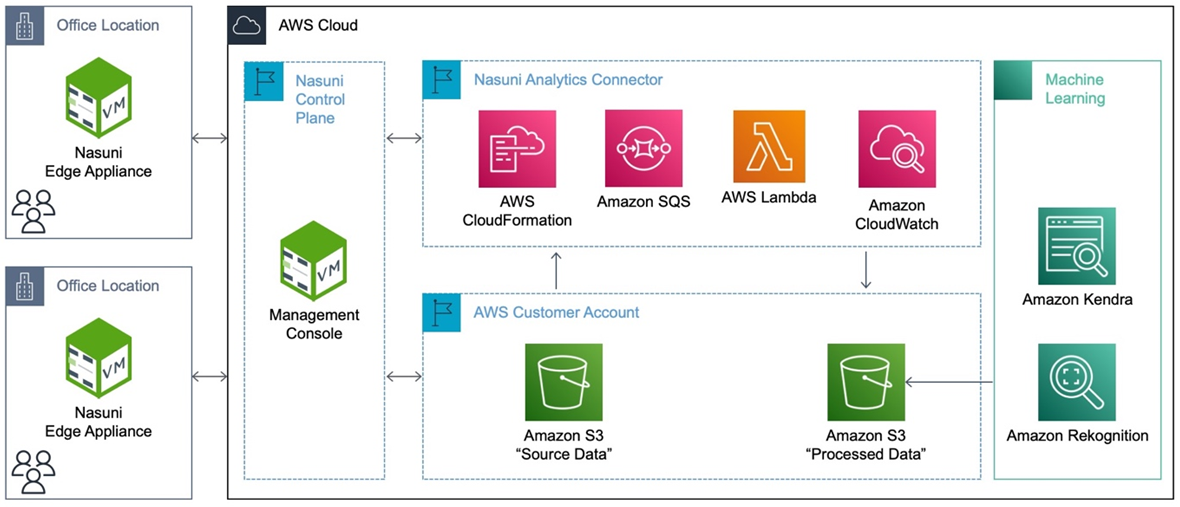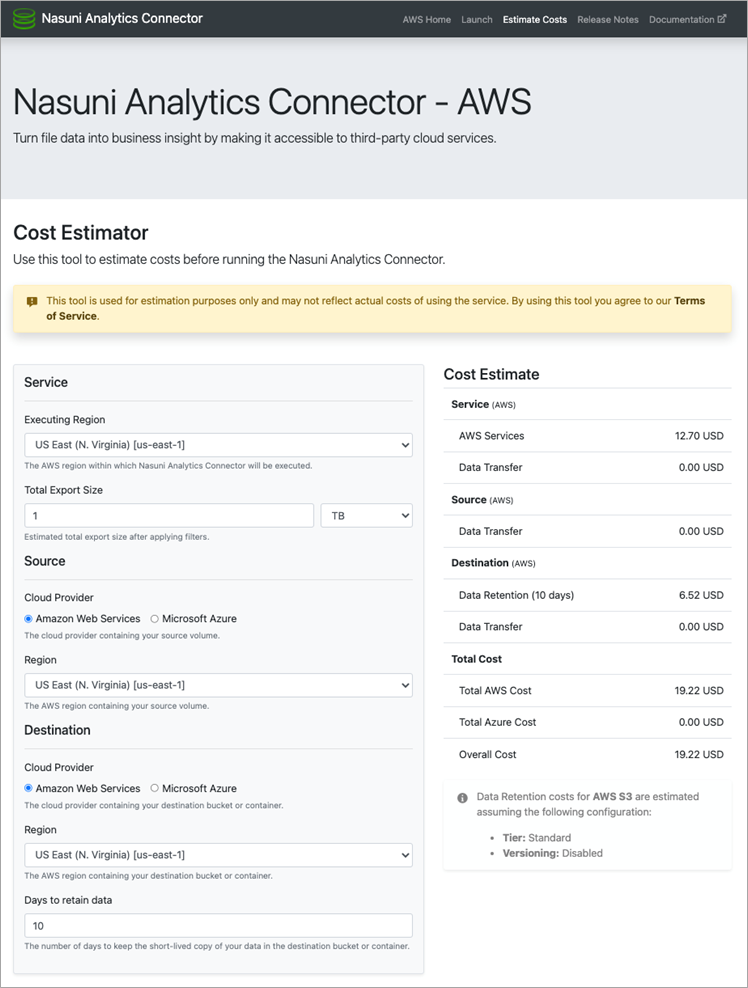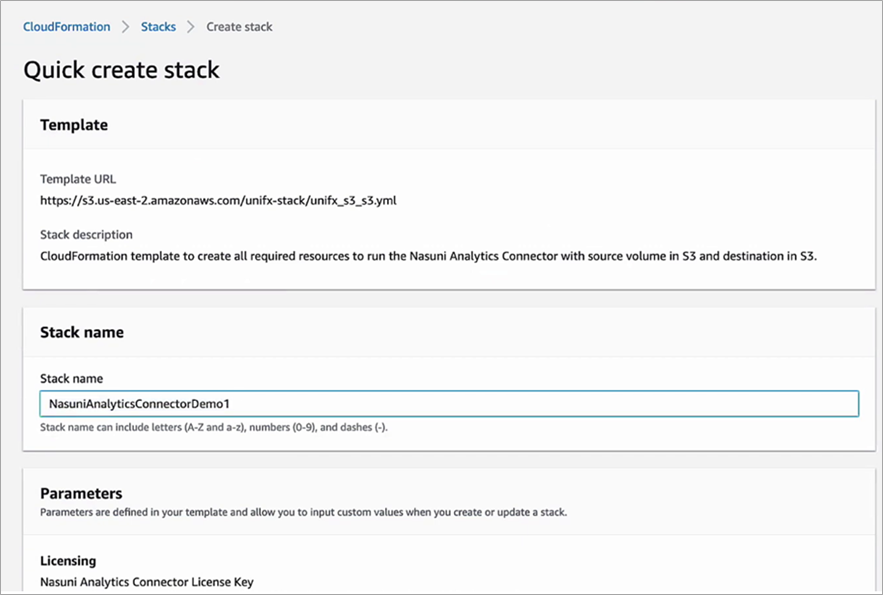AWS Partner Network (APN) Blog
Extend the Value of File Data in Architecture, Engineering, and Construction Workflows with Nasuni
By Ivan Panushev, Principal Partner Solutions Architect – AWS
 |
| Nasuni |
 |
The architecture, engineering, and construction (AEC) industry is experiencing unprecedented growth in unstructured data. As a result, IT teams have been pushed to consider innovative strategies for file data storage and analytics.
Modern computer-aided design (CAD) and building information modeling (BIM) workflows have contributed to the need for collaboration between building architects and engineers.
In construction, new methods of capturing site information, such as laser scanning, photogrammetry, drone photography, and continuous video monitoring have presented challenges for file storage, analysis, and archiving.
Nasuni is an AWS Storage Competency Partner and file services platform on Amazon Web Services (AWS) that provides infinite file storage, backups, disaster recovery, and multi-site file sharing.
In this post, I will explore how the Nasuni Analytics Connector (NAC) can help AEC customers gain business insight from file data, while using many of the network-attached storage (NAS) they’re familiar with.
Nasuni Cloud File Storage Architecture
With Nasuni, all data is consolidated and stored on Amazon Simple Storage Service (Amazon S3). Copies of frequently used files (.dwg, .dxf, .dgn, .prt, .sldprt, .pdf) are cached locally on Nasuni edge appliances—lightweight virtual machines that replace traditional on-premises file servers and NAS devices.
Nasuni’s global file system enables file sharing and collaboration across users and locations. Customers can seamlessly share files with engineers, project managers, and staff—regardless of location—while still being able to access large CAD and BIM files at high I/O processing speeds locally.
Once file data is in the AWS Cloud, the NAC can be used to extend the value of the data.
The unstructured and semi-structured data assets can be analyzed using AWS artificial intelligence (AI) and machine learning (ML) services, such as Amazon Rekognition, Amazon Textract, and Amazon Kendra.
Figure 1 – Nasuni Analytics Connector architecture on AWS.
Nasuni edge appliances enable files to be written and read locally, and periodically send new files and file changes to the AWS Cloud.
Nasuni edge appliances encrypt the data before sending it to Nasuni volumes hosted in Amazon S3, so information is encrypted both in transit and at rest. Once in AWS, the Nasuni Analytics Connector makes the file data available to AWS AI and ML services.
The NAC operates directly on the data already in Amazon S3, where processing is inherently scalable and fast with capability of exporting 14-16 TB of data per hour.
The Analysis Connector creates a temporary copy of your files in native object format so AWS AI and ML services can access and interpret the file data with maximum performance.
The analytics services can run on specific data types or storage paths to enable fine-grained control.
Deployment
Customers can use the Nasuni cost estimator tool to estimate the associated costs of running the Analytics Connector and storing the native object data in their AWS account.
Costs are driven by the specific AI/ML services used and the amount of data being processed.
Figure 2 – NAC cost estimator for AWS.
Nasuni is available on AWS Marketplace, and the Analytics Connector is included in Nasuni’s annual subscription.
Nasuni’s control plane, the Nasuni Management Console (NMC), can be deployed as an Amazon Machine Image (AMI) within your AWS account. Manage and monitor multiple Nasuni edge appliances within the NMC.
There’s also a cloud services dashboard, hosted on account.nasuni.com. From here, you can launch the NAC with an AWS CloudFormation template that can be extended to include selected AWS AI/ML services.
Configuration
To optimize performance, it is recommended that the NAC be launched in the same or closest AWS region where the Nasuni volumes are located. In this step, outlined in Figure 3 below, you’ll need to provide the Nasuni volume encryption keys for the Amazon S3 bucket where the source data is found.
Securely manage keys and configuration data in the AWS Systems Manager Parameter Store.
Figure 3 – NAC launch template.
After selecting the destination bucket on Amazon S3, you’ll be ready to launch the NAC to process the data and make it available to the selected AWS AI/ML services.
The NAC will create a CloudFormation stack where you’ll need to provide additional parameters, such as the NAC license key together with the source and destination Amazon S3 bucket names.
Additional configurations are available, which allow you to filter either based on file size or data type, or process a snapshot created at specific point in time.
Figure 4 – AWS CloudFormation configuration.
You can then run the CloudFormation stack, which will provision AWS Lambda, Amazon Simple Queue Service (Amazon SQS), and Amazon CloudWatch to monitor the progress of the data processing.
Figure 5 – NAC performance dashboard.
The processing throughput is about 10 TB per hour. Upon completion, it will be available to the selected AI/ML service. For example, when analyzing images or video, a Lambda function invokes Amazon Rekognition to extract the entities from the ingested assets.
The detect_labels API call in Amazon Rekognition to provide an output in a JSON format, which could be used downstream to build an image tagging system or search engine.
Using the previously outlined method, you should be able to identify objects, people, text, and activities in images or video to analyze for building project safety and reporting purposes.
Similarly, Amazon Macie can be used with the NAC to see if existing files contain personally identifiable information (PII) and intellectual property (IP) to address compliance issues.
Summary
This post describes how AWS AI/ML services can be applied to a diverse set of file data to open a host of insights and powerful analytics, such as PII data detection, image recognition, and video scanning for safety and compliance.
Nasuni’s file services platform facilitates file sharing and collaboration, and the NAC enables architecture, engineering, and construction (AEC) customers to gain greater business insights from their file data.
Combined with the durability of Amazon S3 and scalability of the AWS AI/ML services, Nasuni provides a comprehensive file data management solution for architecture, engineering, and construction clients.
To learn more, visit the Nasuni website. If you’re ready to get started, check out Nasuni in AWS Marketplace and launch the Analytics Connector.
Nasuni – AWS Partner Spotlight
Nasuni is an AWS Storage Competency Partner and file services platform on AWS that provides infinite file storage, backups, disaster recovery, and multi-site file sharing.
Contact Nasuni | Partner Overview | AWS Marketplace
*Already worked with Nasuni? Rate the Partner
*To review an AWS Partner, you must be a customer that has worked with them directly on a project.






